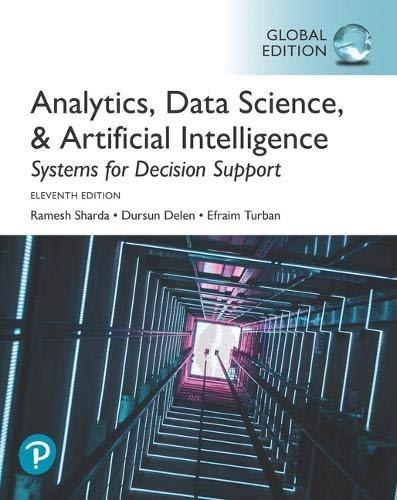In today's hyper-connected world, businesses are under enormous pressure to build relationships with fully engaged consumers who
Question:
In today's hyper-connected world, businesses are under enormous pressure to build relationships with fully engaged consumers who keep coming back for more.
In theory, fostering more intimate consumer relationships becomes easier as new sources of data emerge, data volumes continue their unprecedented growth, and technology becomes more sophisticated.
These developments should enable businesses to do a much better job of personalizing marketing campaigns and generating precise content recommendations that drive engagement, adoption, and value for subscribers.
Yet achieving an advanced understanding of one's audience is a continuous process of testing and learning. It demands the ability to quickly gather and reliably analyze thousands, millions, even billions of events every day found in a variety of data sources, formats, and locations-otherwise known as Big Data. Technology platforms crafted to gather these data and conduct the analyses must be powerful enough to deliver timely insights today and flexible enough to change and grow in business and technology landscapes that morph with remarkable speed.
Netflix, an undisputed leader and innovator in the over-the-top (OTT ) content space, understands this context better than most. It has staked its business and its brand on delivering highly targeted, personalized experiences for every subscriber- and has even begun using its remarkably detailed insights to change the way it buys, licenses, and develops content, causing many throughout the Media and Entertainment industries to sit up and take notice.
To support these efforts, Netflix leverages Teradata as a critical component of its data and analytics platform. More recently, the two companies partnered to transition Netflix to the Teradata Cloud, which has given Netflix the power and flexibility it needs-and, so, the ability to maintain its focus on those initiatives at the core of its business.
A Model for Data-Driven, Consumer-Focused Business
The Netflix story is a model for data-driven, directto consumer, and subscriber-based companies- and, in fact, for any business that needs engaged audiences to thrive in a rapidly changing world. After beginning as a mail-order DVD business, Netflix became the first prominent OTT content provider and turned the media world on its head; witness recent decisions by other major media companies to begin delivering OTT content.
One major element in Netflix's success is the way it relentlessly tweaks its recommendation engines, constantly adapting to meet each consumer's preferred style. Most of the company's streaming activity emerges from its recommendations, which generate enormous consumer engagement and loyalty.
Every interaction a Netflix subscriber has with the service is based on meticulously culled and analyzed interactions-no two experiences are the same.
In addition, as noted above, Netflix has applied its understanding of subscribers and potential subscribers-as individuals and as groups-to make strategic purchasing, licensing, and content development decisions. It has created two highly successful dramatic series-House of Cards and Orange is the New Black-that are informed in part by the company's extraordinary understanding of its subscribers.
While those efforts and the business minds that drive them make up the heart of the company's business, the technology that supports these initiatives must be more powerful and reliable than that of its competitors.
The data and analytics platform must be able to:
• Rapidly and reliably handle staggering workloads;
it must support insightful analysis of billions of transactional events each day-every search, browse, stop, and start-in whatever data format that records the events.
• Work with a variety of analytics approaches, including neural networks, Python, Pig, as well as varied Business Intelligence tools, like MicroStrategy.
• Easily scale and contract as necessary with exceptional elasticity.
• Provide a safe and redundant repository for all of the company's data.
• Fit within the company's cost structure and desired profit margins.
Questions for Case 7.1
1. What does Netflix do? How did they evolve into this current business model?
2. In the case of Netflix, what was it meant to be data-driven and customer-focused?
3. How did Netflix use Teradata technologies in its analytics endeavors?
Step by Step Answer:

Analytics Data Science And Artificial Intelligence Systems For Decision Support
ISBN: 9781292341552
11th Global Edition
Authors: Ramesh Sharda, Dursun Delen, Efraim Turban





